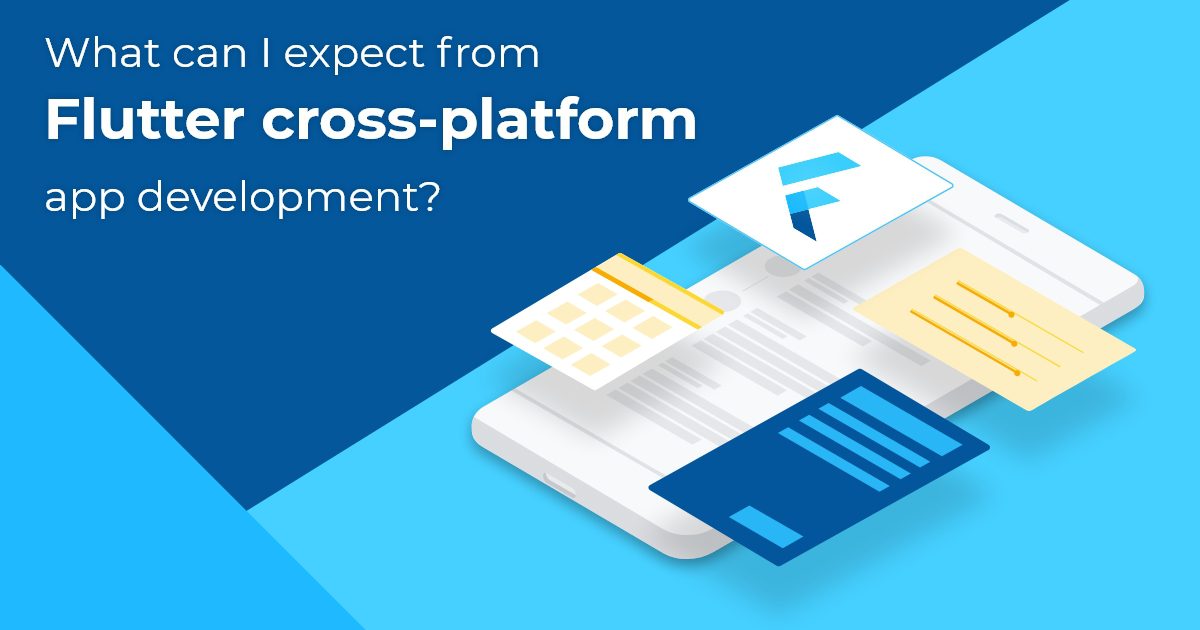Why do experts suggest going with Flutter for cross-platform development over other frameworks?

There are three types of app development: native, hybrid, and cross-platform. Native app development uses the platform’s native programming language and tools. Hybrid app development uses a combination of native and web development tools. Then there is cross-platform app development that uses specific SDKs and frameworks like React Native and Flutter.
The ever-growing app development industry has seen explosive growth in recent years. This growth is due in part to the ever-growing popularity of mobile devices, which in turn has led to an increase in the number of app development projects. This progressive demand has also driven the hype of cross-platform app development that enables developers to create apps for multiple platforms from a single codebase.
Consequently, hiring Flutter developers has become a norm. We will clarify why Flutter and not other cross-platform frameworks a moment later. First, let us understand a bit more about Cross-platform app development.
Understand the cross-platform approach to building apps
Cross-platform app development is an ever-growing industry, and with new devices and platforms becoming available on a regular basis, the field of app development is constantly evolving. Developing an app for each platform using platform-specific technology is not affordable for every company. At the same time, they also cannot miss out on any platform where their target audience could be.
Cross-platform app development is a process of developing software for multiple platforms. This is done using programming languages and frameworks compatible with the various systems.
The approach is highly beneficial for developers and companies, specifically startups, as it is less time-consuming than developing an app for each operating system separately. It also provides benefits to your users, who will get access to the same app on their different devices. (in case one switches to iOS from Android and vice versa.)
The purpose behind the Flutter
Google’s Flutter cross-platform SDK was created in order to make developing mobile apps more efficient, faster, and more manageable. They have designed the SDK with a focus on creating a user interface that is both visually appealing and easy to use. This allows developers to create apps that look and feel more like traditional desktop applications.
Flutter also has an integrated Dart programming language, making development faster and easier. Android and iOS developers have been using cross-platform development SDKs for some time now, but what made Google develop the Flutter cross-platform SDK?
The answer is its usability. After all, what good is a cross-platform SDK if it’s not easy to use? The Flutter cross-platform SDK was designed with iterative development in mind, making it easy to create mobile applications that run on both Android and iOS devices. And you can use the code to build apps for the web and desktops, too.
Flutter first came in Dec 2018 and has quadrupled its strength and capabilities in these four years. Google’s promise with the Flutter cross-platform SDK was to offer a powerful toolkit that can help everyone create more user-friendly and efficient universal apps from a single codebase. And it has well maintained its promise by making app development cost-effective.
Pros and Cons of using Flutter for cross-platform
Moving on from Flutter’s purpose to what advantages the platform offers, let us find out why Flutter, UI framework & SDK, is gaining loads of traction. So, let’s get going…
Flutter saves your money
It allows you to write code once and use it to create apps for mobile devices, the web, and the desktop, as well as offers extensive IDE support. As a result, you don’t have to maintain multiple codebases or code the same features separately for different platforms. Flutter will save you tons of time and money. We have a dedicated post about how much flutter app development costs.
No compromise on Native look and feel
In addition to the SDK, Flutter also comes with a UI framework, and everything in it is a widget, which you can customize according to your needs. Additionally, it offers widgets specific to Material UI apps and Cupertino apps that are iOS-specific. The widgets allow you to create an interface similar to native Android and iOS apps.
Default High Performance
As a cross-platform application development platform, Flutter apps are often faster and more performant than existing platforms such as React Native and Apache Cordova. Thanks to Flutter’s unique rendering mechanism, Flutter provides 60 frames per second performance by default or 120 frames per second on devices capable of 120Hz updates.
With Flutter, UI components are rendered by a high-performance graphics engine, Skia. It is contrary to transitional frameworks that compose native widgets on the screen. Skia is a two-dimensional, highly optimized graphics engine, providing Flutter an edge with regard to default performance compared to other cross-platform SDKs.
With the release of the Flutter 3.3 version, the team has presented a whole new rendering engine called Impeller to replace the Skia. However, the engine is currently in preview and available only for iOS.
Flutter Migration
Apart from marvelous characteristics, Flutter is so flexible in app development that it also offers add-to-app functionality. Leveraging this Flutter functionality, anyone can harness the power of Flutter in their existing iOS and Android apps. It is a one-of-a-kind feature that allows you to integrate Flutter into your app piecemeal as a module or library. Yes, that means you don’t need to write your app from scratch to use Flutter.
Supports, tooling & language
Among other factors, the tech stack and comprehensive support Flutter offers are what makes it developers’ first choice for cross-platform development. For example,
Pub – it’s an efficient plugin manager and repository loaded with massive libraries, plugins, and shared packages developed by other developers that you can find on pub.dev.
Dart language – Flutter uses and is written in the Dart programming language, which is also Google’s achievement and easy to learn by nature, allowing the creation of modern and efficient applications.
Plugin creation– Flutter also allows developers to develop plugins when there is no existing plugging to help them with the access they need for any platform feature.
IDE support – Another fact that Flutter makes developers’ jobs easy is its extensive support for various Integrated Development Environments to code in their favorite one, including IntelliJ, Android Studio, Visual Studio Code, etc.
What are the apps made with Flutter?
In addition to Google, eBay motor, Alibaba, Groupon, and Hamilton, there are many other companies from diverse industries that have used Flutter to make their mark. For example,
Cryptomaniac pro
Cryptomaniac pro is a dynamic app for crypto enthusiasts to keep track of over 4000 cryptocurrencies’ real-time market prices. Besides, it also provides users with in-depth information about cryptocurrency signals, their wallet histories, news, currency converter, and more.
Philips Hue
It is an intelligent app built on top of Flutter for controlling Philips smart lights right from the smartphone according to your mood. The app consists of unique features, such as customized sync settings, connecting with HDMI devices, syncing with the content on the TV, and more.
Flydirekt app
Using Flydirekt, you can search for direct flights worldwide, check weather forecasts, and load estimated flight prices without any problem.
Are you in for Flutter?
Google has developed a cross-platform SDK and UI framework, Flutter, which makes development on the platform much simpler and more efficient. Flutter is a new
mobile development SDK that is quickly gaining popularity among developers.
With its ease of use, Flutter has become a powerful player in the mobile development market, with 145k stars on GitHub. There are numerous benefits of using Flutter, in addition to low maintenance cost, highly interactive and customized UIs, native look, and performance.
The expectations are even higher from Flutter as the team continues to extend and add unique features and capabilities.



